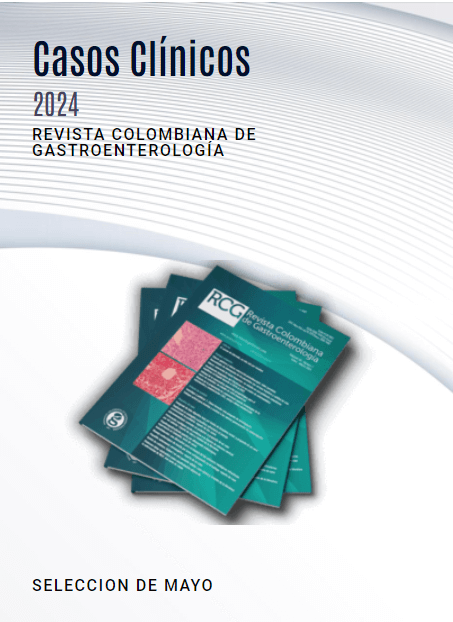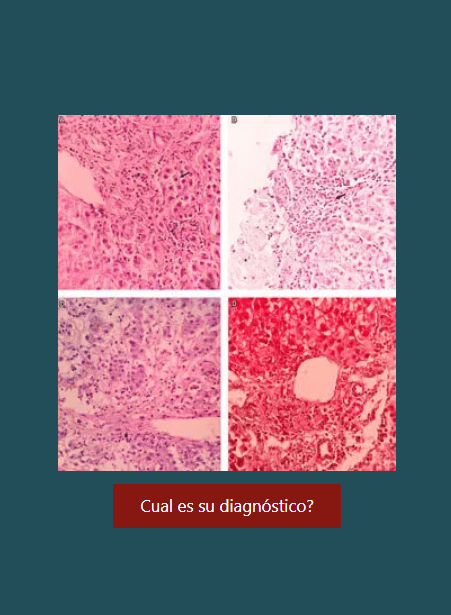Telangiectasia hemorrágica hereditaria. Reporte de caso
DOI:
https://doi.org/10.22516/25007440.11Palabras clave:
Telangiectasia, síndrome de Osler-Weber-Rendu, hemorragiaResumen
La telangiectasia hemorrágica hereditaria o síndrome de Osler-Weber-Rendu es una entidad autosómica dominante rara, con una frecuencia que oscila entre 1 por cada 16 300 habitantes a 1 por cada 1331 depen- diendo de la población y la localización geográfica, sin predilección de género. Se caracteriza clínicamente por telangiectasias, epistaxis a repetición, lesiones viscerales vasculares (malformaciones arteriovenosas) y usualmente con un antecedente familiar. Este trabajo reporta un caso clínico compatible con esta entidad que presentó complicaciones muy raras como lo son el absceso pulmonar y cerebral a la vez.
Descargas
Lenguajes:
esReferencias bibliográficas
Sutton HG. Epistaxis as an indication of impaired nutrition, and of degeneration of the vascular system. Med Mirror 1864;1:769.
Babington BG. Hereditary epistaxis. Lancet. 1865;2:362-3. 3. Rendu M. Epistaxis repetees chez un sujet porteur de petits angiomes cutanes et muquex. Bull Mem Soc Med Hop Paris. 1896;13:731-34.
Osler W. On a family form of recurring epistaxis associated with multiple telangiectases of the skin and mucous membranes. Bull Johns Hopkins Hosp. 1901;12:333-7.
Weber FP. Multiple hereditary developmental angiomata (telangiectases) of the skin and mucous membranes associated with recurring haemorrhages. Lancet. 1907;ii:160-2.
Hanes FM. Multiple hereditary telangiectasis causing hemo- rrhage (hereditary hemorrhagic telangiectasia). Bull Johns Hopkins Hosp. 1909;20:63-73.
Chuan-Qiang Q, Shou-Gang G, Yan H, Yu-Xin C. CT Manifestations of Osler-Weber-Rendu Syndrome in Liver: Report of Three Cases. J Clin Imaging Sci. 2012;2:26.
Guttmacher AE, Marchuk DA, White RI. Hereditary hemo- rrhagic telangiectasia. N Engl J Med. 1995;333(14):918-24.
Westermann CJJ, Rosina AF, De Vries V, de Coteau PA. The prevalence and manifestations of hereditary hemorrha- gic telangiectasia in the Afro-Caribbean population of the Netherlands Antilles: a family screening. Am J Med Genet A. 2003;116A(4):324-8.
Govani FS, Shovlin CL. Hereditary haemorrhagic telan- giectasia: a clinical and scientific review. Eur J Hum Genet. 2009;17(7):860-71.
Fernández-L A, Sanz-Rodriguez F, Blanco FJ, Bernabéu C,
Botella LM. Hereditary hemorrhagic telangiectasia, a vascu- lar dysplasia affecting the TGF-beta signaling pathway. Clin Med Res. 2006;4(1):66-78.
Kjeldsen AD, Møller TR, Brusgaard K, Vase P, Andersen PE. Clinical symptoms according to genotype amongst patients with hereditary haemorrhagic telangiectasia. J Intern Med. 2005;258(4):349-55.
Sharathkumar AA, Shapiro A. Hereditary haemorrhagic telangiectasia. Haemophilia. 2008;14(6):1269-80.
Begbie ME, Wallace GMF, Shovlin CL. Hereditary haemorr- hagic telangiectasia (Osler-Weber-Rendu syndrome): a view from the 21st century. Postgrad Med J. 2003;79(927):18-24.
Maldonado LV, Absceso intramedular en paciente con enfer- medad de Rendu-Osler-Weber. Medicina. 2007:714-16.
Grand’Maison A. Hereditary hemorrhagic telangiectasia.
CMAJ. 2009;180(8):833-5.
Tabakow P, Jarmundowicz W, Czapiga B, Czapiga E. Brain
abscess as the first clinical manifestation of multiple pul- monary arteriovenous malformations in a patient with hereditary hemorrhagic telangiectasia (Rendu-Osler-Weber disease). Folia Neuropathol. 2005;43(1):41-4.
Mathis S, Dupuis-Girod S, Plauchu H, Giroud M, Barroso B, Ly KH, et al. Cerebral abscesses in hereditary haemorrha- gic telangiectasia: a clinical and microbiological evaluation. Clin Neurol Neurosurg. 2012;114(3):235-40.
Shovlin CL, Guttmacher AE, Buscarini E, Faughnan ME, Hyland RH, Westermann CJ, et al. Diagnostic criteria for hereditary hemorrhagic telangiectasia (Rendu-Osler-Weber syndrome). Am J Med Genet. 2000;91(1):66-7.
Faughnan ME, Palda VA, Garcia-Tsao G, Geisthoff UW, McDonald J, Proctor DD, et al. International guidelines for the diagnosis and management of hereditary haemorrhagic telangiectasia. J Med Genet. 2011;48(2):73-87.
Olitsky SE. Hereditary hemorrhagic telangiectasia: diagnosis and management. Am Fam Physician. 2010;82(7):785-90.
Descargas
Publicado
Cómo citar
Número
Sección
Licencia
Aquellos autores/as que tengan publicaciones con esta revista, aceptan los términos siguientes:
Los autores/as ceden sus derechos de autor y garantizarán a la revista el derecho de primera publicación de su obra, el cuál estará simultáneamente sujeto a la Licencia de reconocimiento de Creative Commons que permite a terceros compartir la obra siempre que se indique su autor y su primera publicación en esta revista.
Los contenidos están protegidos bajo una licencia de Creative Commons Reconocimiento-NoComercial-SinObraDerivada 4.0 Internacional.

| Estadísticas de artículo | |
|---|---|
| Vistas de resúmenes | |
| Vistas de PDF | |
| Descargas de PDF | |
| Vistas de HTML | |
| Otras vistas | |

















